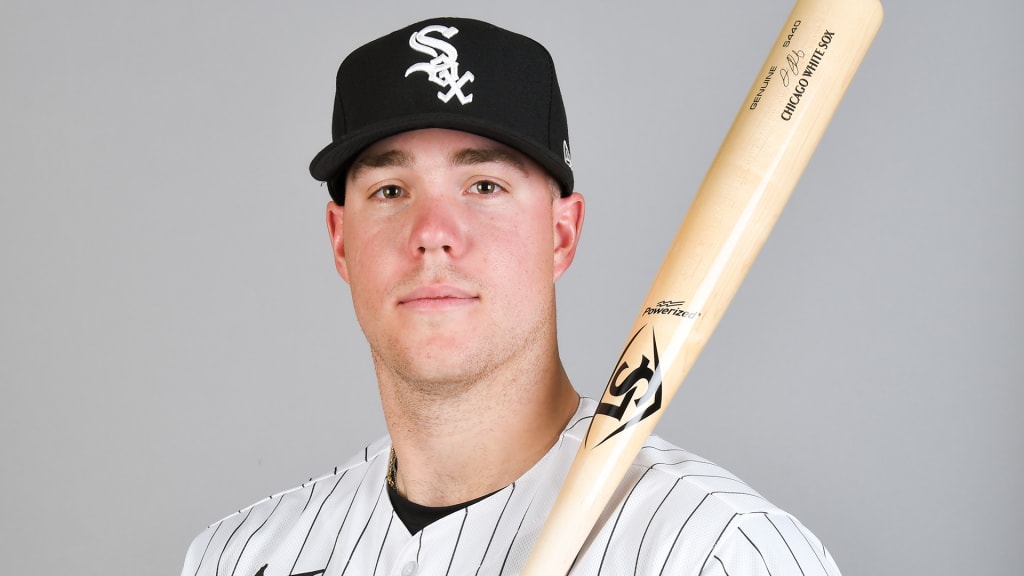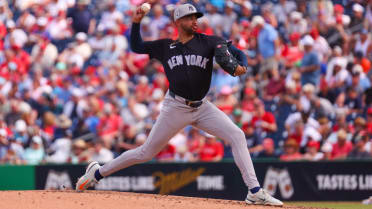Sheets 'in a much better spot,' set for camp

CHICAGO -- Gavin Sheets wasn’t happy when the White Sox didn’t add him to their Schaumburg, Ill., alternate training site last season, basically leaving the No. 9 White Sox prospect out of baseball competition for a full season.
But instead of hanging on to the disappointment, the 24-year-old undertook a mission to improve his overall game. That mission included losing 15 pounds and adding right-field play to his resume.
“It was a tough year. It was tough mentally, tough physically to lose a year of development,” Sheets told MLB.com during a recent interview. “But a lot of good came from it that I didn’t see at the time.
“To able to shed about 15 pounds and get faster and add outfield to the repertoire, it’s been a huge advantage for me. It’s nice to know I took advantage of the time, at least, and didn’t lose a full year. I think I’m in a much better spot because of it now.”
The left-handed-hitting first baseman’s outfield addition was actually discussed before Sheets left Arizona when the COVID-19 pandemic shut down Spring Training and eventually erased the Minor League season. He returned to Baltimore, where he was able to work out at Gilman, his high school alma mater, and then focused on speed stuff, acceleration drills and agility drills with his trainer in order to get his body right.
Having his father, Larry, work with him on the outfield became a great source of help. The elder Sheets played outfield during his eight-year career, which featured a .316 average, 31 homers and 94 RBIs for the Orioles in 1987.
Sheets’ dad hit him fly balls, ground balls and worked with him on making throws from the outfield. He also helped Gavin get acclimated to the smaller things.
“Where to be, movements you need to make, the small drop steps and stuff like that,” Gavin said. “Obviously, once you get in the game, those are movements you need to know. I wanted to make sure that when I got out to Arizona, I knew what I needed to be able to do. I knew the movements I needed to be able to make and could go from there. He was fully supportive of it and was a great help.”
“I think he tried to wear my arm out and my fungo out,” said Larry with a laugh. “We hit. We threw. We took fly balls. Again, anything that I can do to try to help, I’m always willing to do it.”
That outfield progression continued at the instructional league in Arizona, which was the biggest test for Sheets to see his preparation in game reps. He liked the ability to use his arm strength where he didn’t get to use it at first base, while also getting used to the way the ball tails in the corners down the line or in the gaps.
“You really have to get as many reps as possible before you can really get comfortable with it,” Sheets said. “Definitely catching the first ball in a live game was a big relief.
“Obviously, you get all your practice reps and you finally get out there and you just want to get the first one under your belt. It will be the same way for this Spring Training. It was great. I really enjoyed it. I think it was a good fit. I impressed myself, and I think I impressed the White Sox as well with the transition.”
Sheets feels as good as he ever has with his swing and the way he’s getting through the baseball. He fell victim to a depth chart sort of situation last year, with the White Sox having plenty of players who could play first base and designated hitter in the big leagues and needing pitchers in Schaumburg. Despite the initial frustration, he appreciates the White Sox thinking of ways to get him involved outside of first base.
“Looking back on it now, I think it helped me out in the long run, but definitely at the time it was tough,” said Sheets, who had good talks with White Sox assistant director/player development Chris Getz about his situation. “It’s part of baseball, and to be able to move on from it and get better from it and use it as a chip during the summer, use it as some motivation, that’s what I was able to do.”
“When you are not the guy, you’ve got to do everything you can to bring more value,” said Larry of his son. “And again, I don’t know what’s going to happen this spring, but he’s one of the few guys that can check four boxes. He’s a left-handed pinch-hitter, he’s a DH, he can play first base and he can play the outfield. The more boxes you can check, the bigger the value you are to a franchise or an organization.”
Senior Reporter Scott Merkin has covered the White Sox for MLB.com since 2003.




